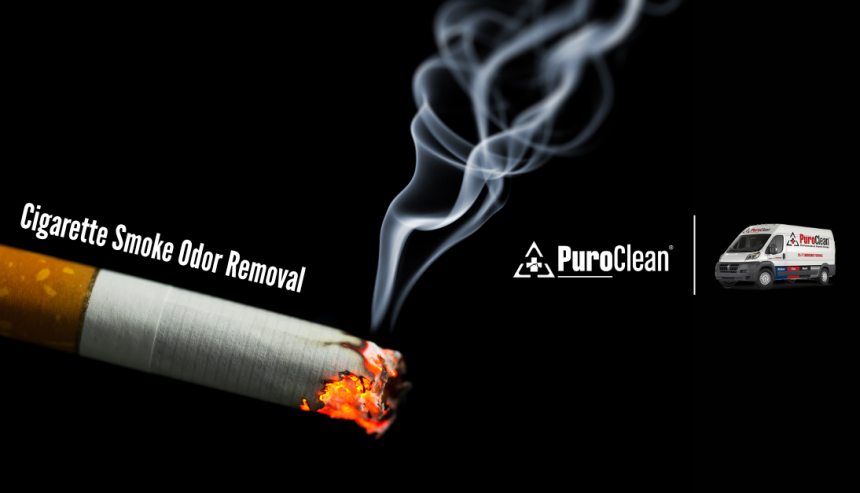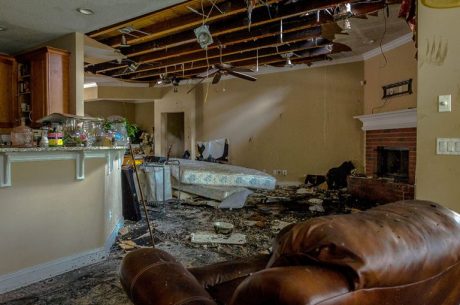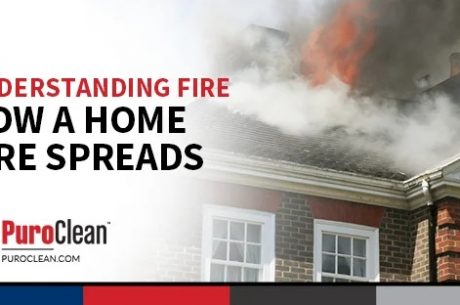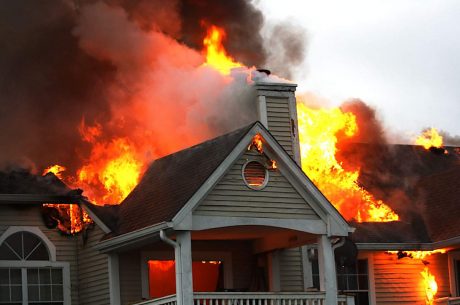Here’s something that might surprise you: cigarette smoke particles measure just 0.1 to 1 micron in size, which is significantly smaller than what standard HEPA filters can trap. This microscopic size is precisely why cigarette smoke odor is notoriously difficult to eliminate. The smoke doesn’t just linger in the air; it penetrates deep into carpets, drywall, ceiling materials, and throughout the HVAC system.
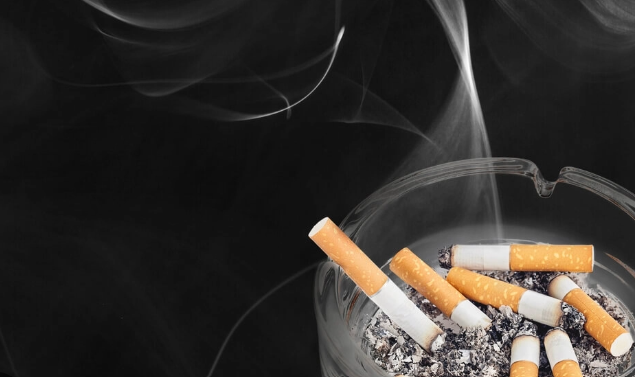
For Los Angeles realtors, this presents a real challenge. Properties with persistent smoke odors take longer to sell and often receive lower offers. Potential buyers can sense it the moment they walk through the door, and that first impression matters. The reality is that cigarette smoke odor removal goes far beyond opening windows or masking the smell with air fresheners. It demands a systematic, professional approach.
At PuroClean of Victor Heights, we’ve helped countless real estate professionals restore smoke-damaged properties to market-ready condition. Here are six essential insights every realtor should understand about the complexity of cigarette smoke odor removal and how to set proper expectations with your clients.
Read Also: Free Mold Inspection for Renters in West Los Angeles: Your Rights and What to Expect
1. Understanding the Science Behind Smoke Penetration
Before attempting any remediation, it’s crucial to understand what you’re dealing with. Cigarette smoke contains over 7,000 chemical compounds, many of which are sticky and volatile. These compounds don’t simply float through the air—they actively bond with surfaces throughout the home.
The problem starts with third-hand smoke, a term that describes the residue left behind after cigarette smoke dissipates. This residue contains nicotine, tar, and other toxic chemicals that adhere to walls, furniture, fabrics, and virtually every porous surface in the property. Over time, especially in homes where smoking occurred regularly for months or years, these particles build up in layers that become increasingly difficult to remove.
In Los Angeles properties, especially older homes common in the Victor Heights area, the issue becomes more complex. Many of these homes have original wood floors, plaster walls, and older HVAC systems that have absorbed years of smoke exposure. The porous nature of these materials makes them particularly susceptible to smoke absorption.
What makes this even more challenging is that smoke particles follow air currents throughout the home. They travel through doorways, seep under baseboards, penetrate insulation in walls and attics, and circulate through ductwork. This means that even rooms where smoking never occurred directly can still harbor smoke odor.
For realtors, understanding this science helps explain to sellers why surface-level cleaning won’t solve the problem. It also helps justify the cost and time investment required for professional smoke odor removal, which is essential for maximizing the property’s market value.
2. Surface Cleaning Is Just the Beginning
Many homeowners believe that a thorough cleaning will eliminate smoke odor. While cleaning is certainly necessary, it’s only the first step in a comprehensive remediation process.
Professional smoke odor removal begins with deep cleaning of all washable surfaces. This includes washing walls, ceilings, and trim with specialized cleaning solutions designed to break down nicotine and tar residue. Standard household cleaners simply aren’t formulated to tackle these stubborn compounds effectively.
At PuroClean of Victor Heights, we use professional-grade degreasers and nicotine removers that can penetrate the sticky residue left by cigarette smoke. This process often requires multiple applications, especially in areas where smoking was heaviest, such as living rooms, bedrooms, or garages converted into smoking areas.
Hard surfaces like countertops, cabinets, and appliances also require attention. Kitchen cabinets, in particular, often show visible yellowing from smoke residue. This discoloration isn’t just aesthetic—it’s a sign of deep contamination that holds odor. These surfaces need to be thoroughly cleaned and, in some cases, sealed to prevent odor from continuing to off-gas.
Flooring presents its own set of challenges. Carpets act like sponges for smoke particles, trapping them deep within the fibers and padding. Professional carpet cleaning using hot water extraction can help, but in severe cases, carpet replacement is the only viable solution. Hardwood floors may need to be thoroughly cleaned and resealed, as smoke can penetrate the finish and even the wood itself.
Window treatments, including blinds and curtains, are major odor holders. Fabric curtains should be professionally cleaned or replaced, while blinds need to be individually wiped down or replaced entirely. Many realtors find that the cost of replacing window treatments is a worthwhile investment that significantly improves the home’s appeal.
However, here’s the critical point: even after all this cleaning, the odor often persists. Why? Because cleaning only addresses surface-level contamination. The smoke that has penetrated into walls, subflooring, and building materials continues to release odor over time. This is where the next steps become essential.
3. Don’t Overlook the HVAC System
One of the most commonly overlooked sources of persistent smoke odor is the HVAC system. When someone smokes indoors, smoke particles are drawn into return air vents and circulated throughout the entire duct system. These particles settle on every surface inside the ductwork, on the air handler, and on the HVAC coils.
In Los Angeles homes, where air conditioning is used heavily for much of the year, the HVAC system runs frequently. This constant circulation means that contaminated ductwork can continuously reintroduce smoke odor throughout the property, even after surfaces have been thoroughly cleaned.
Professional HVAC cleaning is essential for effective smoke odor removal. This process involves:
Inspecting the entire system to assess the level of contamination. In some cases, visual inspection reveals thick layers of tar and nicotine buildup on duct surfaces and components.
Cleaning all ductwork using specialized equipment designed to remove particulate buildup from duct surfaces. This isn’t the same as the typical duct cleaning offered by many services—it requires specific techniques for smoke residue removal.
Read Also: Fire Season Preparedness: Protecting Your Victor Heights Property Before, During, and After Wildfires
Cleaning or replacing the air handler and coils, which often harbor significant smoke residue. The HVAC coils, in particular, can retain moisture that interacts with smoke particles to create especially stubborn odors.
Replacing all filters throughout the system, including any return air filters and the main HVAC filter. In homes with significant smoke damage, filters may need to be replaced multiple times during the remediation process.
Sealing the ductwork after cleaning to encapsulate any remaining residue that cannot be completely removed. This prevents continued off-gassing of odor into the living space.
For realtors working in the Los Angeles market, it’s important to note that buyers are increasingly savvy about indoor air quality issues. Many will specifically ask about HVAC maintenance and whether the system has been properly addressed in smoke-damaged properties. Having documentation of professional HVAC cleaning can be a valuable selling point and may even be required for certain buyers or their lenders.
The cost of HVAC remediation can be significant, but it’s a necessary investment. Skipping this step almost guarantees that smoke odor will return, even after other remediation efforts have been completed.
4. Primer and Sealant Are Your Best Friends
After thorough cleaning, the next critical step is sealing surfaces to lock in any remaining odor and prevent continued off-gassing. This is where many DIY efforts fall short—homeowners simply repaint without properly sealing first, only to find that the smoke odor returns within weeks or months.
Professional smoke odor remediation requires the use of specialized primers and sealants designed specifically for odor blocking. These products create a barrier between contaminated materials and the living space, preventing smoke particles trapped deep in porous materials from continuing to release odor.
Shellac-based primers are particularly effective for smoke odor because they create an impermeable seal. Products like BIN primer (made by Zinsser) are industry standards for smoke remediation. These primers must be applied to all walls, ceilings, and any exposed wood surfaces that have been affected by smoke.
The application process requires attention to detail:
All surfaces must be clean and dry before primer application. Any remaining residue on the surface can interfere with adhesion and reduce the effectiveness of the seal.
Multiple coats may be necessary in areas with heavy smoke damage. One coat is rarely sufficient in homes where smoking occurred regularly over extended periods.
Primers should be applied not just to visible surfaces but also to areas that may seem unaffected, such as closet interiors, cabinet interiors, and inside utility spaces. Smoke travels everywhere, and unsealed areas can continue to be sources of odor.
After priming, a quality paint finish helps add an additional layer of protection and gives the home a fresh, clean appearance that appeals to buyers.
For Los Angeles realtors, it’s worth noting that properly sealed smoke-damaged properties often present better than homes that have been superficially cleaned and quickly repainted. The investment in professional sealing pays dividends in buyer perception and helps properties sell faster and at better prices.
In severe cases, some building materials may be so contaminated that sealing alone isn’t sufficient. This brings us to our next essential tip.
5. Sometimes Removal and Replacement Is Necessary
This is often the hardest conversation realtors need to have with sellers: sometimes, cleaning and sealing aren’t enough. In homes with severe, long-term smoke damage, certain materials may need to be removed and replaced entirely.
Carpet and padding are the most common candidates for replacement. Carpet backing and padding are highly porous and can retain smoke odor even after professional cleaning and deodorizing. In many cases, the cost difference between repeated professional cleaning attempts and simply replacing the carpet isn’t significant, and replacement provides a permanent solution.
Drywall in extreme cases may need to be removed. When smoke damage is severe—particularly in homes where smoking occurred indoors for many years—drywall can become so saturated with smoke residue that no amount of sealing will completely contain the odor. This is especially true for drywall in rooms where smoking was heaviest and for ceilings directly below smoking areas.
Insulation in attics and walls can harbor smoke odor, particularly in older homes. Smoke particles can penetrate into insulation through any gaps or openings in the building envelope. In severe cases, attic insulation may need to be removed and replaced.
Ceiling tiles in homes with drop ceilings are almost always beyond salvaging in smoke-damaged properties. These porous tiles absorb smoke like sponges and should be replaced as part of any comprehensive remediation effort.
Subfloring beneath carpet may need to be sealed or, in extreme cases, replaced if the padding wasn’t sufficient to protect it from smoke penetration.
At PuroClean of Victor Heights, we conduct thorough assessments to determine what can be salvaged and what needs replacement. Our goal is always to find the most cost-effective solution that completely eliminates the odor problem, not simply to recommend the most expensive option.
For realtors, having these conversations early helps manage seller expectations and prevents disappointment down the road. It’s better to invest in doing the job right the first time than to waste money on half measures that don’t solve the problem.
The Los Angeles real estate market is competitive, and buyers have options. A property that still smells of smoke, even faintly, will consistently be passed over in favor of cleaner alternatives. The investment in proper remediation, including replacement of contaminated materials when necessary, typically pays for itself in faster sale times and higher offers.
6. Professional Ozone Treatment and Air Scrubbing Make the Difference
After all cleaning, sealing, and replacement work is complete, professional deodorization provides the finishing touch that ensures complete odor elimination. This is where advanced technology makes a significant difference.
Ozone treatment is one of the most effective methods for eliminating smoke odor at the molecular level. Ozone generators produce O3 (ozone), which is a highly reactive molecule that breaks down odor-causing compounds. When ozone comes into contact with smoke particles, it oxidizes them, essentially destroying the molecules that create the smell.
However, ozone treatment must be performed by trained professionals. Ozone is toxic to humans and pets at the concentrations needed for effective smoke odor removal, so the property must be completely vacant during treatment. At PuroClean of Victor Heights, we follow strict protocols for ozone application, including proper equipment setup, appropriate treatment duration based on the severity of contamination, and thorough ventilation after treatment before the property is safe to reoccupy.
Ozone treatment is particularly effective because it reaches areas that can’t be easily cleaned by hand. The ozone gas penetrates into cracks, crevices, and porous materials, treating smoke odor at its source rather than simply masking it.
Hydroxyl generators offer an alternative to ozone that can be used in occupied spaces. These machines produce hydroxyl radicals that similarly break down odor molecules but are safe for people and pets. While generally less aggressive than ozone, hydroxyl treatment can be particularly useful for ongoing maintenance or in situations where complete vacancy of the property isn’t possible.
Air scrubbers equipped with HEPA filters and activated carbon filters help remove any remaining airborne particles and odors during and after the remediation process. These machines continuously filter the air, capturing smoke particles that may be released during cleaning and demolition work.
The combination of these technologies, used in sequence after all other remediation work is complete, ensures that smoke odor is completely eliminated rather than simply masked or temporarily reduced.
The Bottom Line for Los Angeles Realtors: Call PuroClean of Victor Heights

Cigarette smoke odor removal is a complex process that requires professional expertise, specialized equipment, and often significant investment. For realtors in the Los Angeles market, understanding this complexity helps you better serve your clients and set realistic expectations.
Read Also: Living the American Franchise Dream With PuroClean – Charles Omajuwa
Properties with smoke odor issues can still sell well but only after proper remediation. Buyers in Los Angeles are increasingly health-conscious and aware of indoor air quality issues. They won’t overlook smoke odor, and they certainly won’t pay top dollar for a property that has ongoing odor problems.
Working with a professional restoration company like PuroClean of Victor Heights ensures that smoke-damaged properties are properly remediated the first time. We provide detailed assessments, transparent pricing, and comprehensive solutions that address every aspect of smoke odor removal.
For sellers, the investment in professional smoke odor removal typically pays for itself through faster sale times and higher offers. For realtors, having a trusted restoration partner helps you handle these challenging properties with confidence and positions you as a knowledgeable professional who can guide clients through complex situations.
If you’re working with a smoke-damaged property in Los Angeles, don’t leave the outcome to chance. Contact PuroClean of Victor Heights for a professional assessment. We’ll help you understand exactly what’s needed, provide a clear scope of work, and execute a remediation plan that completely eliminates smoke odor and makes the property market-ready.
